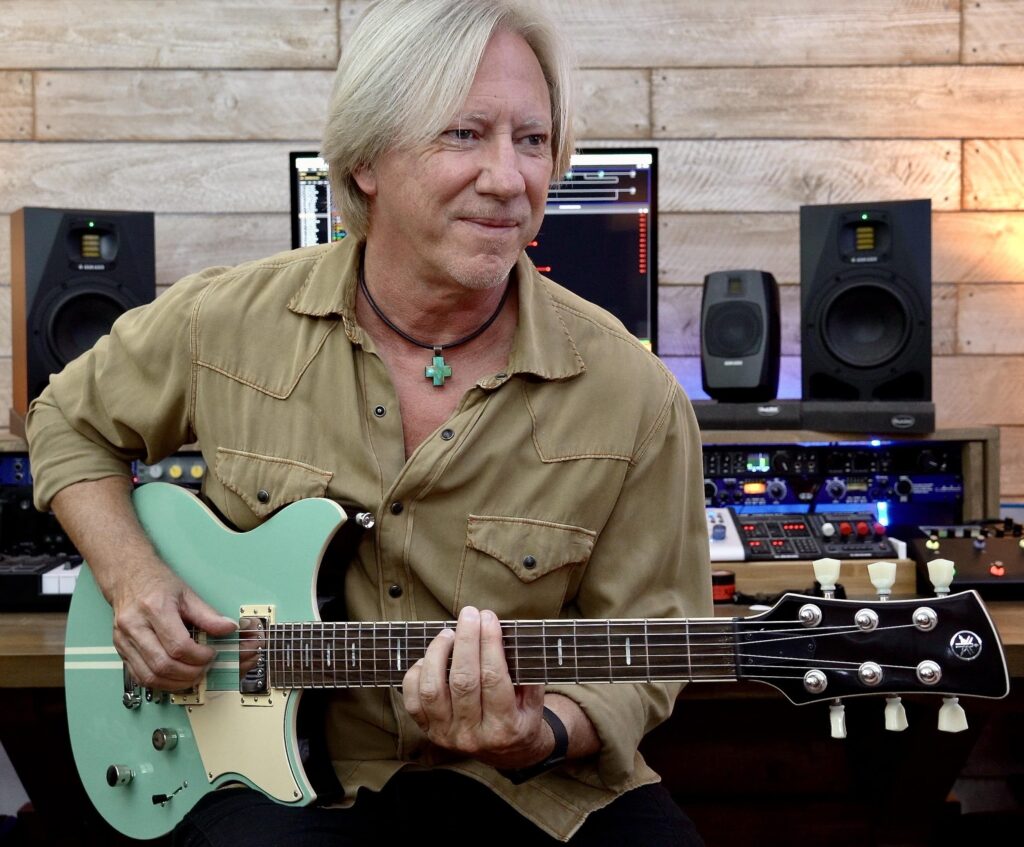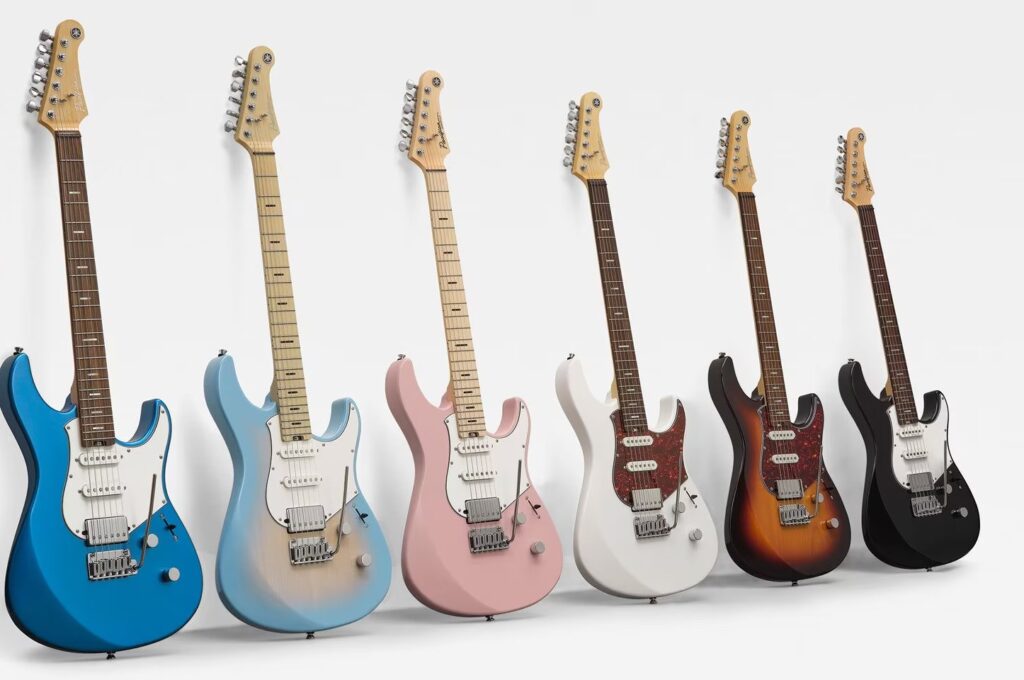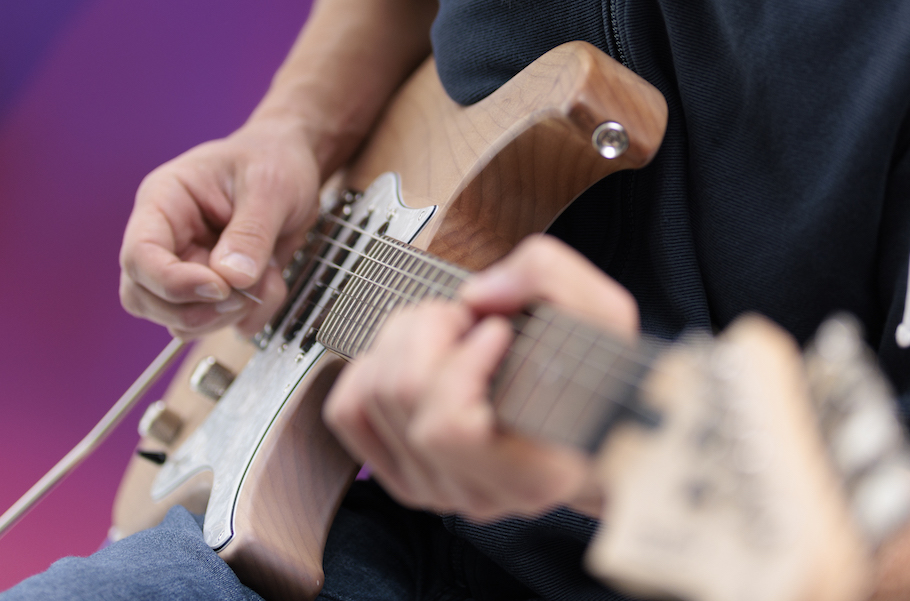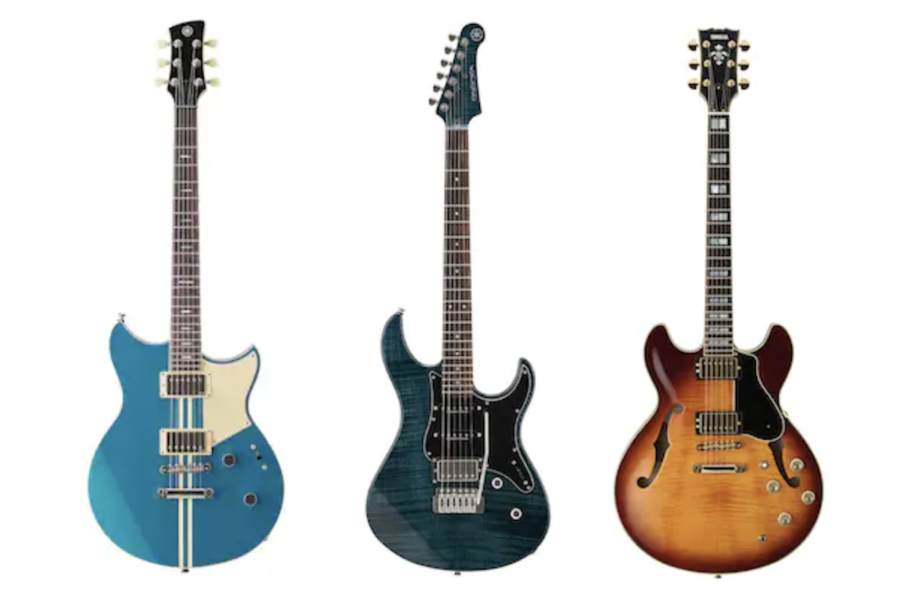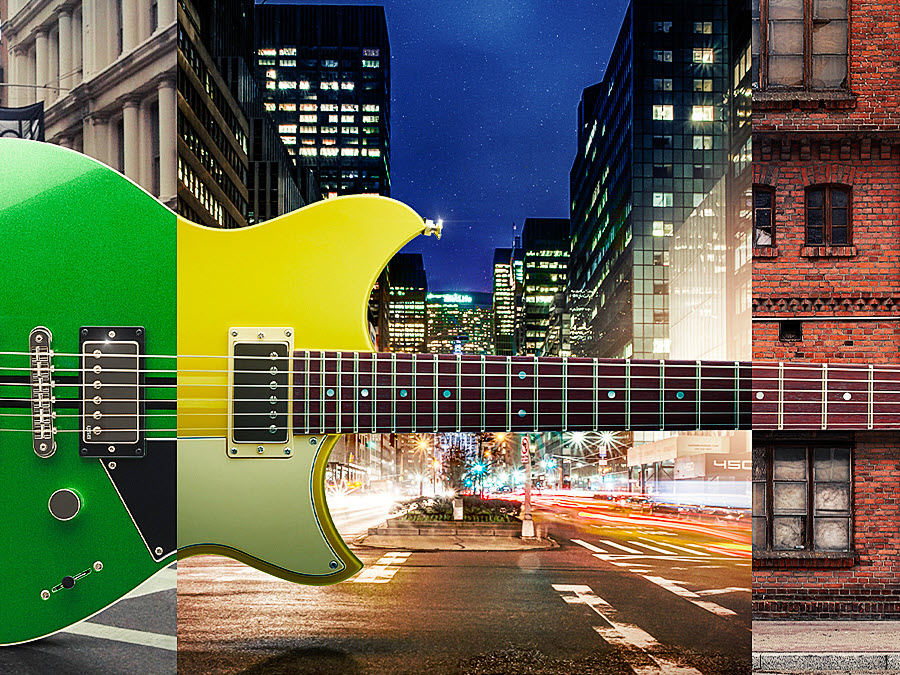A Guide to Electric Guitar Pickups
They’re the heart of your guitar.
We’ve discussed previously how multiple factors affect the tone produced by an electric guitar, from the soul of the player to the tonewoods used in the instrument’s construction … and everything in-between.
But probably none has more impact than the pickups on the instrument. Here’s a guide to the many pickup options available, how they differ and why you should familiarize yourself with the various tonalities they provide.
What Is a Pickup?
An electric guitar pickup is simply a magnet (or, more typically, a set of six magnets — one for each string) inserted into a bobbin and wrapped in copper wire. Its function is to sense (“pick up”) the vibrational movement of the strings on your guitar and convert it into electrical energy that can be sent to an amplifier and speakers.
Interestingly, coils and magnets can be used to convert sound to electricity even without electrical power. This is because an electric current flows through a coil whenever a nearby magnetic body (such as a steel string on an electric guitar) is moved. A correlating change occurs in the resultant current depending on the frequency at which the strings vibrate.

Most electric guitar pickups are “passive” — that is, they don’t require external power — though there are also some instruments outfitted with “active” pickups, which are powered by a battery housed in the guitar. These provide a juiced-up signal that appeals to shredders and heavy metal enthusiasts … though, of course, the battery needs to be replaced when it dies.
Regardless of whether it is passive or active, the type of magnets used in any guitar pickup, as well as their proximity to the strings and position along the string length, along with the amount and direction of copper windings, are all contributing factors to the resulting tonality. Although winding the coil more will increase the volume of the sound, if wound too much, the sound will become muffled. In addition, the size of the gap between windings has a major effect on tonality. It’s a complicated formula with multiple interactions, which is why constructing an effective guitar pickup is as much an art as it is a science.
Here are the most common electric guitar pickup types you’ll encounter:
Single-Coil
As their name implies, these types of pickups utilize one coil of wire wound around a magnet. They are the simplest of all the pickup types, but because they are also the smallest, they capture the smallest surface area of the string vibration, thus somewhat limiting their tonal range. However, their reduced footprint enables them to be angled slightly for variation in the bass and treble response, in addition to allowing placement anywhere between the bridge and the fretboard. The height of the pole pieces is often staggered too, to compensate for the natural variation in string volumes. Some modern versions of the single-coil pickup increase the output volumes for contemporary playing styles, but in my opinion, something gets lost in that extra output.
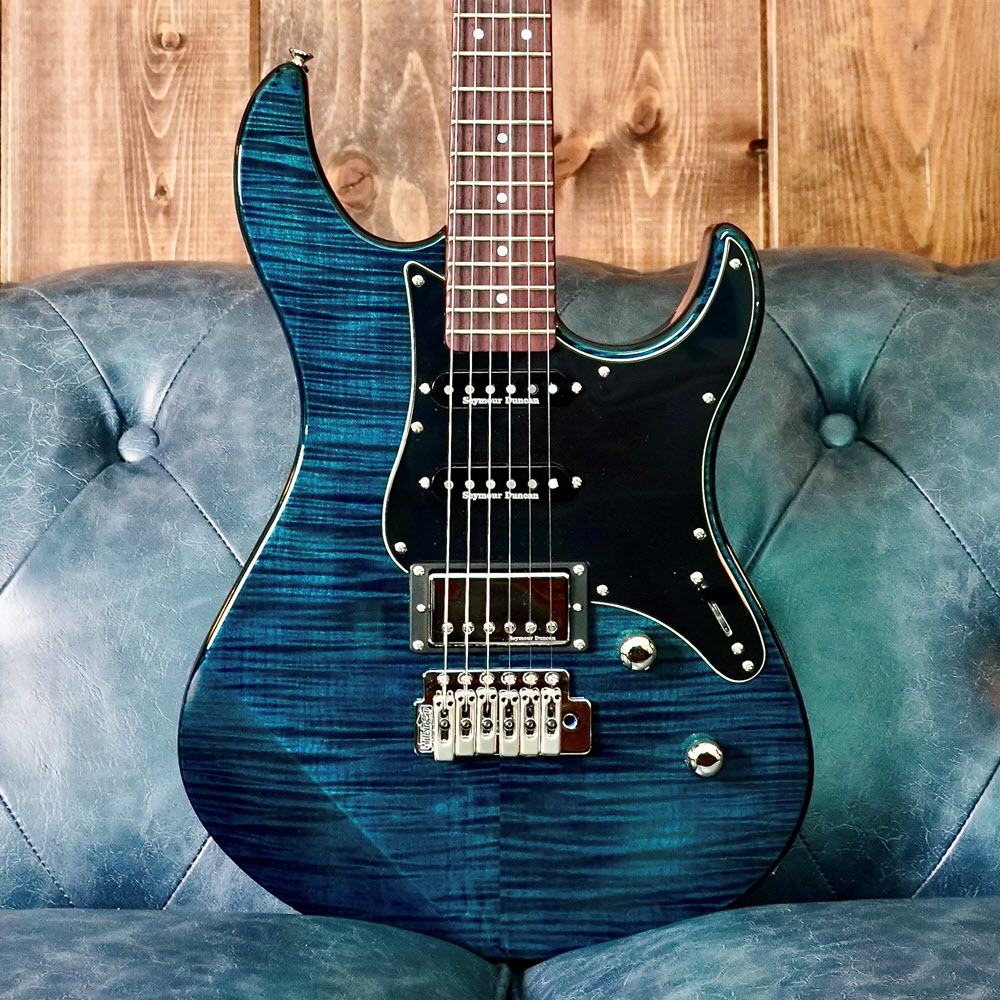
Because they reproduce high frequencies (treble) better than low frequencies (bass), single-coil pickups have a characteristically bright and well-defined sound that easily cuts through any mix. They are also very sensitive to subtleties in a player’s technique, making them eminently suitable for pop, country and funk music. However, single-coils can be noisier than other pickup types (they can actually act like small microphones) and are susceptible in particular to 60 Hz (60-cycle) electrical system hum. This can make them tricky to capture in a quiet recording, but some say that the trade-off in tone is worth the extra effort gating out the noise. I’d agree. After all, once the band kicks in, no one hears the hum anyway.
For a long time, I’d only play guitars fitted with single-coils because I felt that the artistic voice and personality of a guitarist comes through best on an instrument fitted with this type of pickup. Maybe it’s the slower response to the attack that I like — it’s almost as if the notes have air around them … a hollow aspect that envelops the sound.
P90
The P90 is a variation on the basic single-coil pickup, but it has a wider bobbin, giving it more string area to sense, thus creating a sound that’s a little more aggressive and not as cutting as a standard single-coil, with a higher output and fewer humming issues when you crank up the gain. They’re sometimes referred to as “soapbar” pickups because they’re usually sealed in cream-colored or black enamel, which gives them a distinctive look that’s quite different from that of standard single-coils. The Yamaha Revstar RSS02T and RSP02T (shown below) comes with dual cream-colored P90s.
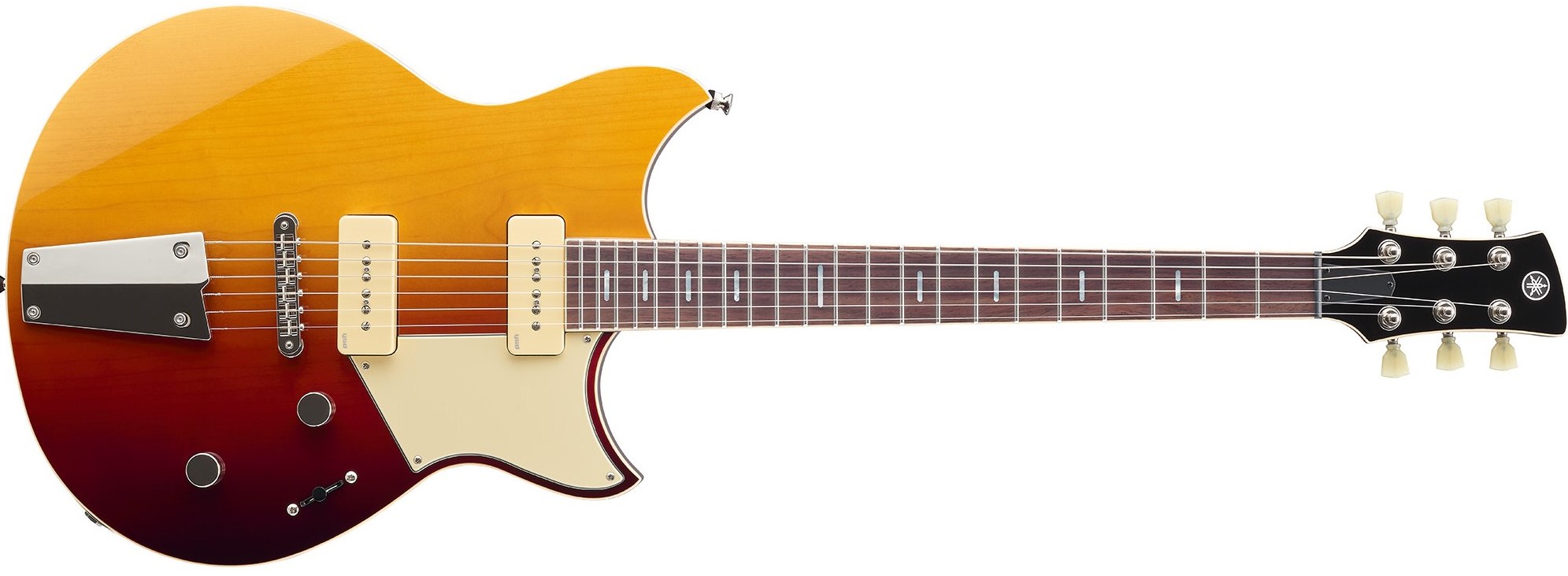
The P90 voice purrs or growls depending on the dynamic of the player. There’s a sweet, gritty dirt that flows like syrup when using a guitar fitted with this kind of pickup, making them perfect for kicking out the jams or playing the blues.
Filter’Tron
Filter’Tron-style pickups are also single-coil in nature, but with an improved signal-to-noise ratio (to “Filter” out the elec”Tron”ic noise). These iconic black and chrome pickups are often associated with retro-styled guitars that emulate those manufactured in the 1950s, sometimes paired with a Bigsby tremolo “whammy bar” system, as in the (now-discontinued) Yamaha Revstar RS720B shown below.

Similar in width to the P90, but with a less aggressive sound, Filter’Trons have a cleaner, chime-like and somewhat jangly tone, making them excellent for rockabilly, rock ’n’ roll chordal playing and single-note arpeggios.
Humbuckers
Humbucking pickups, often called “humbuckers,” are essentially two single-coil pickups mounted side-by-side and wired together. This not only gives them a thick, powerful sound with a hotter output, but also enables them to greatly reduce (“buck”) any hum or buzzing.

Some guitars with humbuckers feature a switch (usually called a coil split or tap) to turn off one coil and make it work and sound like a single-coil pickup.
Humbuckers are sometimes used in the bridge position, paired with two single-coil pickups in the neck and middle positions — a combination used by Yamaha Pacifica 600 Series, 200 Series and 012/100 Series guitars.

But perhaps the most common configuration is that of dual humbuckers in both the bridge and neck positions, as in the Yamaha Revstar RSS20 solid-body and SA2200 semi-hollow body models. Due to their positioning, the bridge humbucker delivers a brighter, punchier sound, while the neck humbucker adds warmth and a smoother tone, especially when playing in the upper register. When paired this way, humbuckers deliver versatility galore and are suitable for every kind of genre, from jazz to blues to hard rock.
Sometimes humbuckers simply look like two single-coils next to each other, as in the Yamaha Pacifica 012 shown above, and sometimes they are placed in a metal casing to look like one large pickup, as in the SA2200 (shown below).

Pickup Selector Switches
Unless your guitar has only one pickup, it will offer a pickup selector switch and individual volume control knobs (often supplemented by tone control knobs) that let you blend various combinations of the pickups onboard.
All Yamaha Revstar Professional and Revstar Standard electric guitars feature a five-way pickup selector switch, along with a pull-pot on the tone control called a “focus” switch. This adds a passive mid-boost tonal variation to any of the five pickup selections … giving Revstar players ten pickup tones on a guitar with only two pickups! These models also come with your choice of P90 or humbucking pickups.
How to Choose Your Pickups
Should you choose your guitar based on its pickups? To some degree, yes, but first and foremost you should always look for an instrument that feels comfortable and fits your personality and style. If you can find a guitar that has all those things in one beautiful package, then you should definitely consider buying it.
But what if you fall in love with a particular guitar but find that its pickups lack the tone, punch or pizzazz you’ve been searching for? No problem: There are a million options for replacement pickups on the market these days. In fact, most pickups can be retrofitted to most guitars without the need for expensive modifications, provided you choose the correct replacement sizes.
Even semi-acoustic and hollow body guitars can have a new set of pickups installed, though it’s best to opt for a qualified luthier or repair technician to make any significant change to your guitar, regardless of how simple it may appear to be.
The Videos
Describing pickup tone is like trying to describe color. The tints and shades they produce depend on the environment we see and hear them in.
For that reason, I thought it would be helpful for you to hear each of these pickup types in action, so here are three videos that do just that.
1. Single-Coil
Here, I’m playing a Yamaha Pacifica 612VIIFM, which, as mentioned previously, features two single-coil pickups (one in the neck position and one in the middle position) and a humbucker (which can be coil-tapped into one single-coil) in the bridge position. In this video, I’m using the single-coils exclusively.
2. Filter’Tron/P90
This video allows you to compare and contrast the sound of P90 pickups and Filter’Trons within the context of a rock’n’roll vibe. The Yamaha Revstar RS720B I’m using for the rhythm (and some of the lead) parts comes with dual chrome Filter’Tron-style pickups. As you can hear, they deliver a clean, clear, punchy sound ideal for rock rhythm. The RS502T I’m using for the arpeggio and lead parts is outfitted with dual P90s for a grittier rock and blues tone.
3. Humbucker
The Yamaha Revstar RSS20 features two humbucking pickups. In this video, I’m also demonstrating the sound of the instrument’s Focus Switch and how it affects the tone of the pickup selections.
The Wrap-Up
There’s a reason why electric guitar pickups are often referred to as “the heart of a guitar.” They certainly bring life to the resonance of the music we play on our instruments.
If your favorite artist favors a certain pickup type, that may be a good place to start when looking for the instrument that delivers the tonality you want to achieve in your own music … and of course there are a ton of video demos online that can help you find exactly what you’re looking for. But there’s no substitute for actually plugging an electric guitar into the amp of your choice and listening carefully as you play to determine what’s right for you.
Photographs courtesy of the author.










